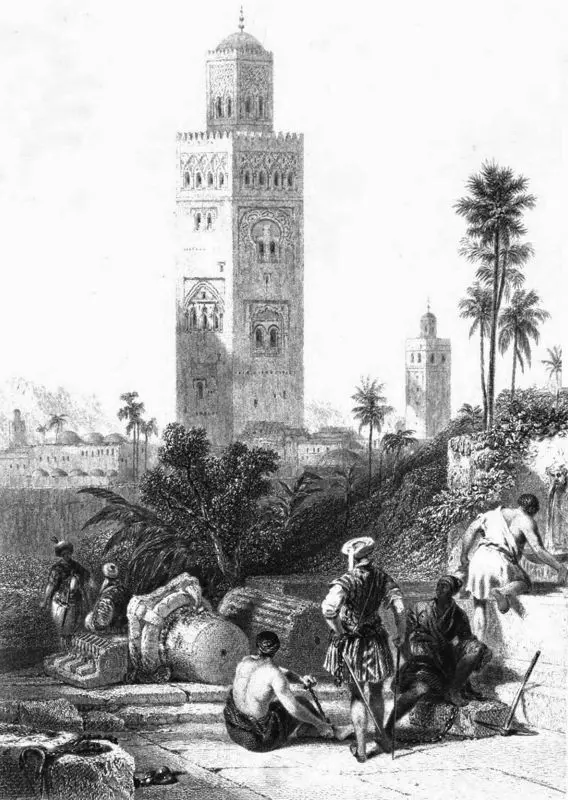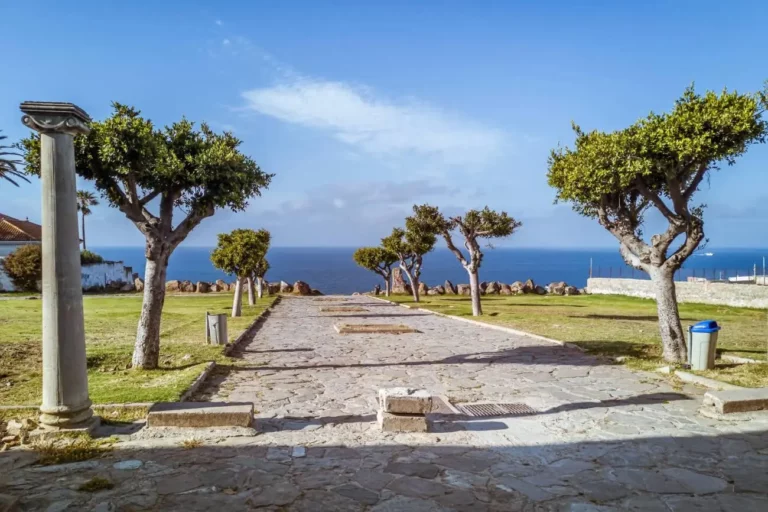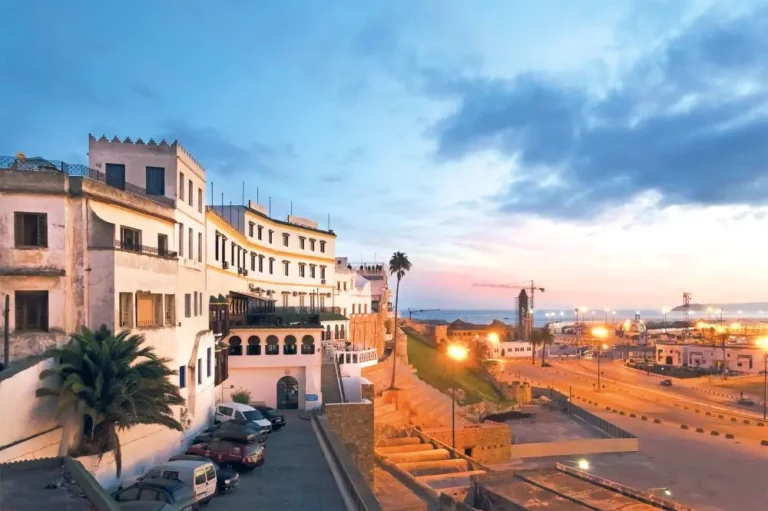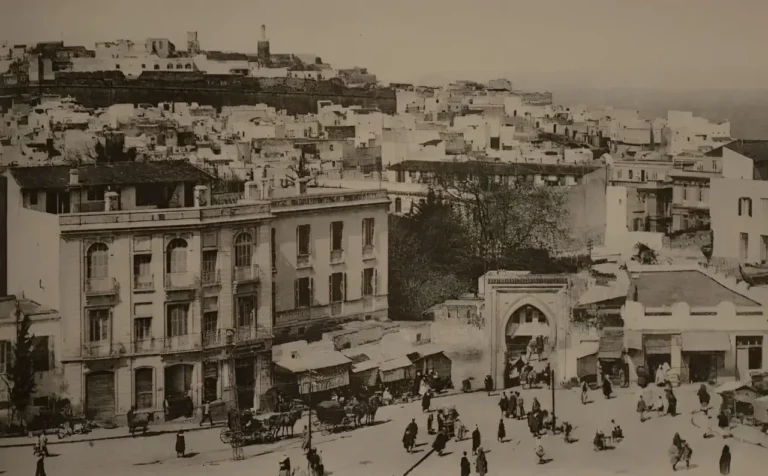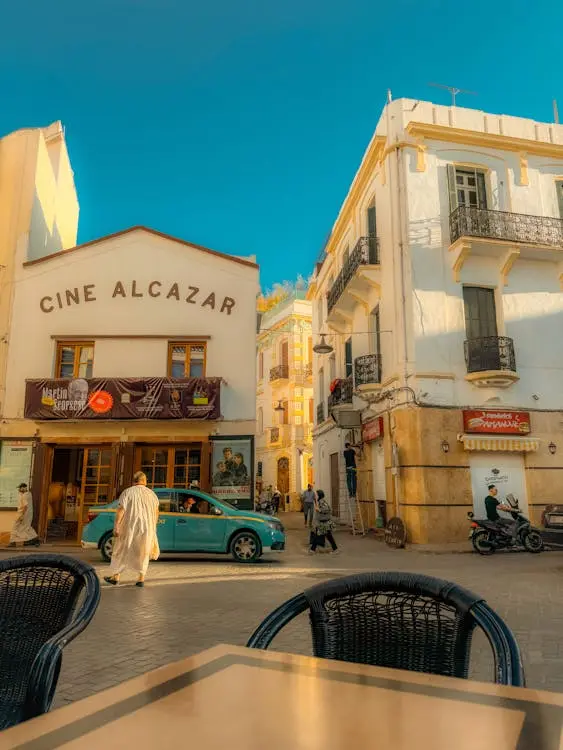The mythology of Tangier is a rich and enjoyable chapter in its history. This unique location in the Mediterranean, at the gateway to the unknown ocean, has fueled the imagination of all the peoples of the mare nostrum. Today, tourist guides indulge in the often approximate narration of these stories. To the author’s knowledge, the legends relating the birth of the city or events that took place in the region have two sources: the Berber source based essentially on linguistics and the much more extensive Greek source.
Tangier oral tradition tells the following story: after the flood, Noah’s ark was drifting, waiting to find dry land. One day, a dove returned to land on the deck of the ark with a little clay on its feet. The occupants of the ark then cried out: “Tin jâa” meaning land has arrived.
Of course, it is highly unlikely that Noah’s language was Arabic… Tanja, in the Berber language, means swamp, which would tend to prove the existence of an Amazigh human settlement well before the arrival of the Phoenicians.
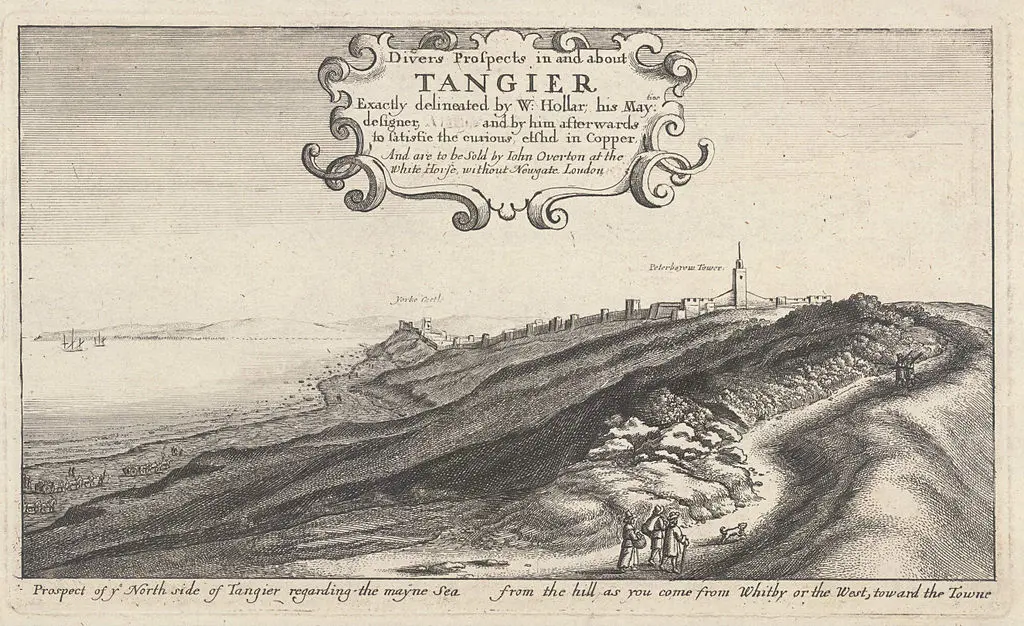
The most beautiful legends about Tangier have come down to us from Greek. According to Plato, the region of Tangier, along with the rest of Libya, was the domain of the giant Antaeus.
In Greek mythology, Antaeus was the son of Poseidon and Gaia. This “monstrous” giant attacked travelers to build a temple dedicated to his father with their skulls. He named his domain after his wife, Tinga, which included the famous Gardens of the Hesperides, renowned for their golden fruits. These gardens stretched from present-day Ceuta to ancient Lixus (the region of Larache). The theft of three golden fruits was one of the twelve labors of the most popular demigod of ancient Greece: Heracles, the Roman Hercules. The Hesperides, for their part, were the nymphs of the West. There were three of them: Aegle, Erythia, and Hesperitousa, and they watched over the marvelous garden filled with golden fruits with the help of Ladon, the hundred-headed dragon. Heracles managed to steal the coveted fruit by trickery, sending Atlas to fight Ladon in his place.
Upon arriving at Antaeus’s domain, Heracles found himself challenged by him in a battle whose traces persist in the local geography. Each time Heracles defeated him, Antaeus drew his strength from contact with the earth, in other words, with Gaia, his mother. Finally, Heracles had to lift Antaeus from the ground while simultaneously suffocating him.
During this titanic battle, a blow from Heracles’ saber opened the Strait of Gibraltar. Then, the son of Zeus and Alcmene raised two columns on either side of the furrow. Another version of the legend attributes the opening of the strait to a shoulder blow from Heracles. The Pillars of Hercules would symbolize the limits of the known world for many centuries. Heracles married the wife of the deceased Antaeus, who bore him a son, Sophox. The latter founded a city he named Tingis in honor of his mother. Sophox’s son fathered Diodorus, who was at the origin of the first royal dynasties of Mauretania…! Legend also attributes to Heracles the development of the caves located south of Cape Spartel, on the Atlantic coast. The Caves of Hercules most likely owe their origin to Neolithic industry. Indeed, the inhabitants of the region dug the rock to extract pieces that were later used to make millstones. Legend adds that the massive remains of Antaeus were buried by his conqueror under the hill of Charf.
Tangier and its surrounding region have also been cited as one of the sites of the exploits of Odysseus, the famous hero of Homer’s equally famous poem, The Odyssey. The Caves of Hercules are said to have been the home of the Cyclops Polyphemus, son of Poseidon, who was blinded by the ingenious Odysseus.
Plato also placed the famous Atlantis in the Pillars of Hercules passage in his “Timaeus.” Recent archaeological research seems to support this theory.
Finally, let us remember that for ancient Greek authors, Tangier, “the most beautiful city in the known world” is a domain chosen by the gods where men “are the tallest and most beautiful that one can find”

